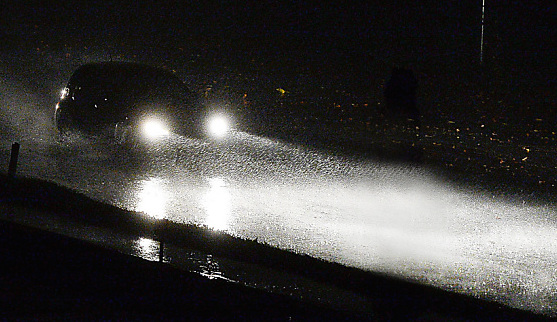The cold front moved in from the west across Germany around midnight, also reaching eastern Austria.
In Upper Austria strong winds caused damage to two houses. The Mühlkreisautobahn (A7) was blocked between Engerwitzdorf and Gallneukirchen by fallen trees.
In Tyrol the Inn valley motorway had to be closed briefly between Wattens and Wörgl. Gusts of 122 km/h were measured in Innsbruck, and many power lines were damaged.
According to ORF Tirol around 30,000 households were without power for an average of 45 minutes and on Wednesday morning 1,000 people still didn’t have electricity.
In Salzburg 780 firefighters were called out more than 100 times between 10.45pm and 1.00am.
The storm was the tail-end of Hurricane Gonzalo, which caused widespread damage on the island of Bermuda last week.
The Central Institute for Meteorology and Geodynamics (ZAMG) has warned people to expect heavy rainfall on Wednesday. Snow could also cause problems on roads and railways in mountainous areas, with the snow line falling to 800 meters.
City authorities in Vienna said construction work at Aspern would be suspended if the winds proved too strong, and urged people to be cautious in city parks as trees may have been damaged and falling branches pose a danger.




 Please whitelist us to continue reading.
Please whitelist us to continue reading.
Member comments